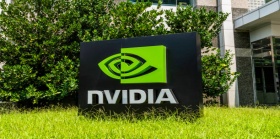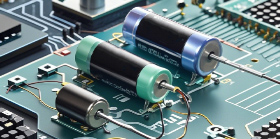Infineon talk about automotive RISC-V chips: It will disrupt the industry landscape
Peter Schiefer, President and CEO of Infineon Technologies' Automotive Division, stated, "In the next five years, the changes in the automotive industry will far exceed those of the next fifty years." He said at the Infineon 2025 Automotive RISC-V Ecosystem Summit held in Munich last week, "Traditional architectures have reached their limits. Therefore, RISC-V will disrupt the industry landscape and achieve synergy between software and hardware.
" As a global leader in automotive semiconductor technology, Infineon is not the only company holding this belief. In the global automotive ecosystem, leaders from chip manufacturers, original equipment manufacturers, and software experts all agree that the future of automobiles is a software defined dynamic computing platform, and to build it, we need to rethink the entire architecture from scratch.
Based on the main opinions from recent group discussions, we have identified 7 key priorities and outlined the conditions required to build the future of automobiles.
1. Regional architecture
Future cars require flexible platforms that can scale across computing domains and rapidly develop with emerging technologies and user demands. From entry-level city cars to high-end autonomous driving fleets, we need computing platforms that can support various performance, safety, and energy needs.
Robert Moran, Vice President and General Manager of NXP Automotive Processor, stated in Ludwigsburg, "We are transitioning from distributed software to regionalization and centralized computing." This approach enables automakers to simplify development processes, optimize costs, and accelerate deployment by reusing platform components across vehicle series.
Nowadays, many modern vehicles on the road adopt domain based architectures and use domain controllers - specialized ECUs that handle specific fields such as powertrain, infotainment, body control, or ADAS. Although domain architecture is effective, it can lead to a significant increase in the number of ECUs and circuits, thereby increasing costs, weight, and system complexity.
In regional architecture, vehicles are divided into physical areas (e.g. left front, right rear) rather than in car functions. Each region is managed by a regional controller and connected through one or more automotive Ethernet buses. These controllers integrate domain specific functions into their respective areas, reducing wiring length and cost, improving latency, and simplifying software and hardware integration. The regional controller no longer forms a complex network like functionally specific modules, but acts as an intelligent hub in a streamlined centralized computing environment.
In Paris, Gallo emphasized the scalability of open platforms in supporting this transformation: "RISC-V is very attractive in the automotive industry because it can be extended from ECU to domain controllers, regional controllers, and central computing within the same basic ISA.
2. Software ecosystem
Without software, one cannot have a Software Defined Vehicle (SDV). Since 2003, AUTOSAR has been a software standard - a collaborative effort between leading global automotive and software companies, supported by almost all major OEMs and tier one suppliers. Last year, Jingxin Technology, Jingwei Hengrun, and Xianji Semiconductor announced their collaboration to build the RISC-V AUTOSAR software ecosystem. Next is automotive grade Linux (AGL). Although AGL itself is not specifically designed for safety critical applications (for example, cars may use AUTOSAR for brake control, while AGL is used for information entertainment systems), community projects and methods such as the ELISA project and AGL Functional Safety Task Force are being developed to certify whether Linux based systems are suitable for safety critical use cases such as instrument panels, ADAS, and remote information processing. AGL has been ported to SiFive Unmatched and HiFive Premier P550 development boards, and we hope to see an AGL version compatible with RVA23 at some point between now and hardware release. But the problem lies here: given the increasingly fierce competition among car manufacturers, obtaining pre production software and tools is becoming a must-have for automotive system developers. Fortunately, the craze surrounding RISC-V has ignited the enthusiasm of software suppliers, who are eager to lead the trend. However, the common problem of "chicken or egg first" has emerged; In order to develop before tape out, they need virtual prototypes - just like what Infineon launched in March.
Thomas Schneid, Senior Director of Software, Partners, and Ecosystems at Infineon Paris, said, "Our virtual prototype aims to empower the ecosystem and provide early access opportunities for leading customers who are eager to explore its functionality and impact. This is an ongoing program, as the fidelity of the prototype will continue to improve and support more and more use cases over time, thereby expanding the collaboration capabilities between different customers and partners
The entire toolchain, from compilers to operating systems to security frameworks, must be prepared and validated before the chip is delivered to the customer. Therefore, it is crucial to directly contribute RISC-V hardware support to widely used open source projects such as Linux, LLVM, QEMU, and Zephyr. This ensures that software developers can build, test, and deploy with confidence without having to redesign the development process for each chip.
A strong upstream layout can also reduce friction between first tier suppliers and original equipment manufacturers, accelerate adoption, and make it easier to maintain and support in the long term - which is crucial for the automotive industry as automotive platforms must be maintained for ten years or even longer. This is precisely where dedicated open-source platforms such as AGL come in handy; AGL is designed specifically for the long lifecycle of automobiles, emphasizing long-term (over 10 years) support and backward compatibility.
Hartmut Schittko, Head of the Semiconductor Division at Volkswagen Software Group's CARIAD, stated at the previous RISC-V Summit in Paris that "RISC-V is an excellent opportunity for us as automotive OEMs. Our relationship with the chip and software communities is becoming increasingly close, as they do require perfect collaboration, especially in high-performance computing (HPC) tasks. "
3.Open hardware
By building on an open, royalty free instruction set architecture, OEM manufacturers can gain long-term control and avoid the trap of relying on a single supplier. This is crucial for achieving interoperability and accelerating global innovation.
RISC-V gives us the opportunity to shape open standards for automobiles, "Schneider said. Infineon is known for its closed ecosystem, which brings reliability, safety, and quality. But now, by opening up to an open architecture, we take on a greater responsibility: to interact with the ecosystem in a way that ensures it becomes a sustainable model for us and everyone around us.
One of the biggest advantages of open hardware is that it allows for optimized collaborative design of hardware and software. OEMs can precisely customize their RISC-V cores to ensure they meet specific vehicle safety, performance, and functional requirements.
Traditionally, we have attempted to improve accuracy by optimizing software algorithms or adding more sensors, "said Maricel Ventura, Senior Chief Engineer at Codasip Paris. RISC-V has opened up another dimension: we can also optimize and customize hardware. This level of collaborative design significantly improves the work efficiency of our software colleagues. "
Schittko stated that starting with open standards would make building the resilience of the supply chain much simpler. If done well, it can have a universal interface layer for SDV. In this way, changing suppliers when necessary becomes easier and requires less investment, without having to completely abandon the entire software stack. "
Of course, this also introduces healthy competition into the supply chain - providing OEMs with clear avenues for choice, leverage, and reducing supplier lock-in.

4. Collaborate through standards
The automotive industry is based on standardization, "Schneider said. This is the necessary foundation to ensure the normal operation of the entire system, achieve scalability, and ultimately achieve efficient operation.
Each group conveyed the clearest message: open success requires shared ownership. Everyone must collaborate and contribute their true abilities and professional knowledge, and the ecosystem must also bring sustainable and fair outcomes to all participants.
Standards are the catalyst for this collaboration. If there is no unified standard, the ecosystem will split and development will slow down. Shared specifications and interfaces can reduce complexity and achieve ecosystem wide compatibility. The future of automotive innovation requires cross industry collaboration to shape shared solutions, standards, and validation frameworks. The core of it is an open and standardized computing architecture.
Gallo stated, "At the CPU architecture level, we coordinate the architecture and avoid unnecessary fragmentation by adopting the concept of configuration files. Our new RVA23 configuration file defines a set of extensions that must be included in the core, such as vectors, bit operations, and virtual machine management programs. It provides developers with clearly defined hardware goals. The goal is to ensure consistency and software portability across the entire ecosystem. "
Pedro L ó pez, Managing Director of Quintauris Paris, said, "Adopting uniform standards at the bottom can reduce a lot of responsibility and lower potential market lock in risks. Coupled with the industry's shift towards higher standardization - finding the right balance between commonality and differentiation - this is the perfect combination for success.
Standardization is crucial if we want an industry where we can choose between three, four, or five IP vendors and avoid vendor lock-in. "Lopez said. He stated that we need a business model that allows IP suppliers to continuously innovate while maintaining financial sustainability, especially in cases where many projects have development cycles of up to 5 to 10 years. In other industries such as software, this leads to integration where only a few participants can truly participate.
Ventura added that collaboration also plays an important role in security. I look forward to seeing the RISC-V ecosystem implement a concept similar to AUTOSAR E-GAS (electronic throttle), allowing multiple original equipment manufacturers to work together to build a shared functional safety culture. Suppliers share the same concept, but their specific implementation methods are different.
5. Safety, security, and real-time performance
Reliability is a triangle: security, network security, and real-time performance, "Jyotika Athavale (dressed in red in the picture - then working at New Think Technology and now Waymo's functional safety director) said in Ludwigsburg. Our work in the field of standards aims to meet the reliability and interoperability requirements between every technology.
Each side of this triangle plays a unique role in ensuring trust in modern automotive systems. Functional safety ensures that the system can maintain predictable behavior in the event of a malfunction. Network security protects system behavior from external manipulation. Real time performance ensures that both are completed within strict time constraints required for physical systems such as braking, steering, or sensor fusion.
Building this reliability triangle in silicon wafers means looking at security from a system level - not just separately authenticating IP blocks, but also recognizing how they operate as part of an integrated computing platform. If we could see a universal concept of CPU security, that would be great, "Ventura added. This concept is developed in collaboration with the ecosystem, rather than just focusing on the hardware itself. She emphasized that publicly discussing implementation challenges and common risks can help drive the development of RISC-V - it is not just an ISA, but also a secure and reliable platform.
Many RISC-V international members, including SiFive, Codasip, Andes, and Nuclei, currently have automotive IPs that comply with the ISO 26262 functional safety standard. However, Ventura points out that although ISO 26262 and ISO/SAE 21434 (cybersecurity) are strict standards, they are not certified. ISO26262 includes the ASIL (Automotive Safety Integrity Level) certification framework - although not mandatory, obtaining certification is a clear signal. With more and more RISC-V CPU cores obtaining ASIL-D or ASIL-B certification, it shows the industry that we are serious about what we are doing. "
With the rapid shift of automotive computing architecture from distributed ECU to centralized and partitioned platforms, the opportunity to rethink security has become a reality. The transition from traditional ECU to centralized computing is evident, and in this environment, more secure RTOS solutions like FreeRTOS have room for development. "L ó pez added.
6. Modularization
Moran said, "Looking at problems from the perspective of vehicle core functions or solving specific problems - safety, security, real-time, and reliability are crucial - will drive very specific decisions in the semiconductor design process. This modularity can be reflected at the hardware architecture level, dividing ECUs or functions into different SoCs, and can also go deep into the chip and chipset level. "
Moran cited artificial intelligence as an example, pointing out that it is an emerging and potentially controversial capability. Although the comprehensive implementation of artificial intelligence may be a risk strategy, modularity enables AI to operate without constraints under strict constraints. Through this approach, we can introduce and utilize innovation outside of the automotive industry while still providing a 'barrier' for the automotive industry, "he said.
Modularization requires functions such as physical memory protection, I/O protection, or management domain isolation, "Gallo agrees. These are the technical requirements that drive the evolution of the RISC-V architecture through new modular extensions. You can choose the specific extensions required for the product based on whether the design goal is ECU or regional controller. "
The chipset provides a fundamental modular solution to this problem. Combining different computing components (CPU, GPU, IO, safety island) into one chip using standard interfaces can bring significant advantages, from hybrid ISA (which may provide an orderly way for car manufacturers to introduce RISC-V into their vehicles) to implementing a hybrid lifecycle (some chipsets remain unchanged while others are updated).
One of the advantages of Chiplet is its ability to achieve very clear hardware isolation between Chiplets that require a high level (ASIL-D level) and those that do not, "said Bart Plackl é, Vice President of IMEC Automotive. For example, your neural network engine may not need to meet the strict standards of ASIL-D.
7. Regional adaptability
Future cars will not be tailored to all markets in one place - they will need to be customized to some extent to meet the different regulatory, safety, environmental, and consumer needs of each region. However, this localized customization must be balanced with the efficiency of a consistent global architecture. Modularity and standardization play a crucial role here.
RVA23 requires that all regions have consistent extensions, "Gallo said. The only regional option we keep is encryption because it needs to comply with national standards.
At the European level, we should strive to achieve 80% universal architecture, "Plackl é said. At present, every car manufacturer has its own operating system - why do we need six or seven in Europe alone? I fully understand the need for high-level differentiation, and this differentiation should definitely be retained. But we also need to seriously consider developing a European platform strategy to ensure that 80% of the architecture can be reused. To be honest, I think we are still far from this goal.
As one of the most strictly regulated fields in the computing industry, artificial intelligence faces significant regional differences, including attitudes, laws, and applications. Moran stated that modularity has once again become the solution. A car manufacturer may use RISC-V CPU chips to develop a unified global silicon-based, but will adjust its AI components according to market demand.
In addition to supporting access permissions, the Chinese market version may also be equipped with an NPU and localized AI for complex city driving, while the German market version is equipped with a more powerful GPU chip that can provide lane change assistance at speeds of over 150 miles per hour (approximately 240 kilometers per hour) on highways. The unified chip architecture achieves precise regional adaptation while reducing costs.
The development momentum of RISC-V in the automotive field is beyond doubt. The supplier told us that they are no longer just promoting RISC-V, but are discussing implementation details with OEM manufacturers who are already convinced. The primary question is: how fast are their movements?
From our perspective, we haven't seen any other alternative solutions - it's that simple, "Lopez said. We have long foreseen that the automotive industry will require the unique advantages of RISC-V. If we as a community can act correctly, then the automotive industry does not need any alternative solutions to RISC-V. "
The future of mobile travel is being built right now - and it will be open, "Schneider said. With RISC-V, we will work together to create the future of mobile travel.
Related Information

- 2025.05.12 Intel terminates Deep Link program



